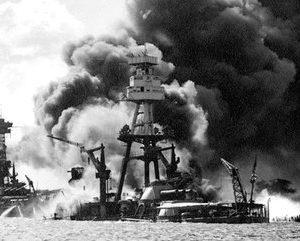I understand that Hitler lacked some academic prerequisites and I am no artist, but the work I’ve seen doesn’t look all that bad.
Hitler’s work was perfectly acceptable for most purposes – indeed it was enough for him to make a living some of the time. There were however three strikes against it that meant that he wasn’t accepted by the Academy of Fine Arts in Vienna:
- He was in the top 10% of applicants – but the best art school in Austria they could only accept 1% of those who applied each year and he both wasn’t 1% and wouldn’t apply anywhere else
- He had most of the technical skills (which could be taught) but not the eye for interesting subjects (which couldn’t be taught) or grasp of emotional connection (which can’t be taught)
- What he was trying to do as an artist was, thanks to the rise of photography, out of fashion which meant that even if he had brushed the top 1% he’d have been a hard sell
I’m going to show a few of Hitler’s paintings. Starting off by showing why he was out of fashion with his 1907 painting of Neuschwanstein Castle. Now the first thing to be said about it is that it’s a damn good painting. Probably enough on its own to make Hitler a candidate worth talking about admitting.

So why wasn’t it good enough for the best art school in Austria? If the rest of his portfolio had been up to that standard it might have been. But it was a deeply unfashionable choice for three reasons.
The first is the choice of subject; Neuschwanstein Castle is one of the cliched subjects that everyone has attempted (and the classic Disney castle was inspired by) and one of Hitler’s weaknesses was that most of his subjects were cliche choices (in part because they sold easily) while art schools look for a choice of interesting and unique subjects because that can’t be taught or copied so easily.
The second is that there’s not a person to be seen and what people were doing to paint people was in fashion. Even most of Hitler’s other pieces have people in them (sketch drawings rather than the more detailed and purposeful other artists would do)
And the third is that 1907 was precisely the wrong time to present that painting given that photography was a rising art and the picture below was what a photochrom picture could do in around 1900. Hitler was trying to take on a camera at the camera’s strengths.
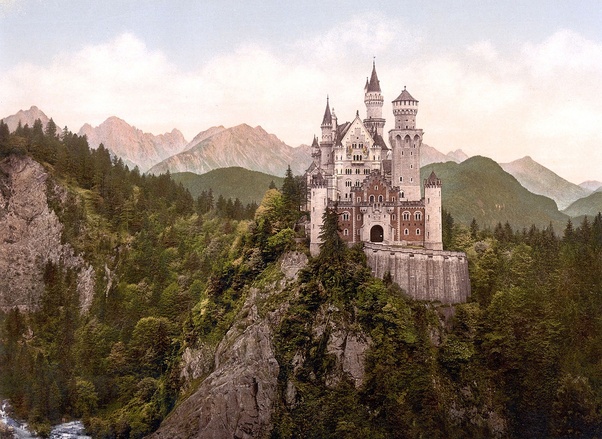
It’s when we look at Hitler’s people that his weaknesses become clear. Here’s his painting of Mary and the baby Jesus again circa the time he’d have been trying to enter art school.

And … it’s lacking. The colour balance drowns the painting, the body language is off, the expressions are off, then hands and the eyes are off. It’s eyecatching but not in the right way with all that gold swamping the place.
Meanwhile to see what a great painter could have done on a similar theme, here’s what Pablo Picasso was able to do at the age of 15 in his first major oil painting (entitled First Communion). It too is almost dazzling but the colour does a lot more to provide focus. Picasso would do even better later, but that’s the sort of painting to make someone sit up and take note.
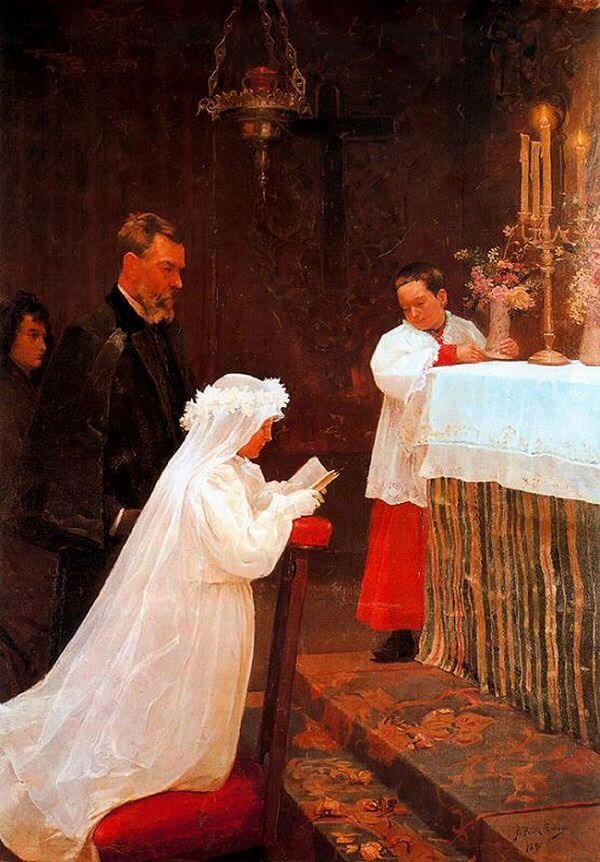
For me the best painting of Hitler’s I’m aware of wouldn’t be painted until after he went to war; the Klosterruine von Messines has a whole lot more emotional content than any of Hitler’s other paintings. But for obvious reasons he wasn’t able to paint that in around 1907 when he was trying to be accepted to the academy.
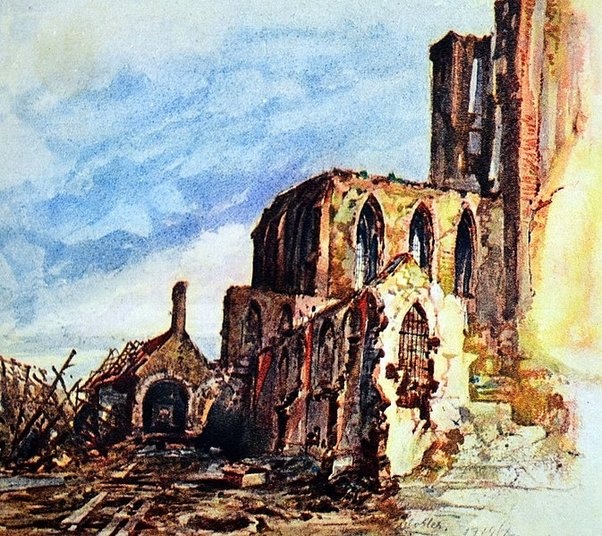
Hitler’s artwork was considered acceptable – and within the top 10% of those applying. It just wasn’t considered to be potentially great or within the top 1%. And Hitler wasn’t prepared to apply to any except the best while not having the talent for the best.
Hitler wasn’t a bad painter. In the 1910s, working as a freelancer, he sold a fairly large number of pieces to shops and collectors in Vienna (many of them Jewish). His skill as an artist certainly far surpasses that of the general population, and while he wouldn’t likely have become a celebrated genius in the field, he did have what it took to be a working professional:
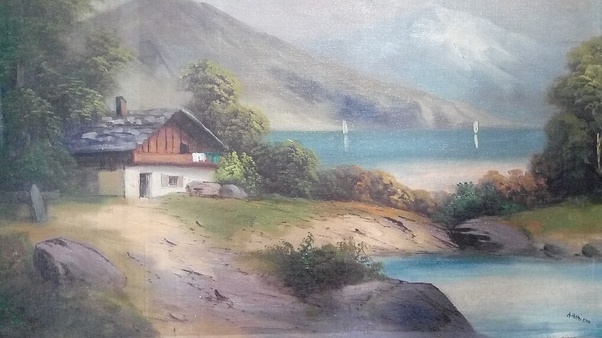
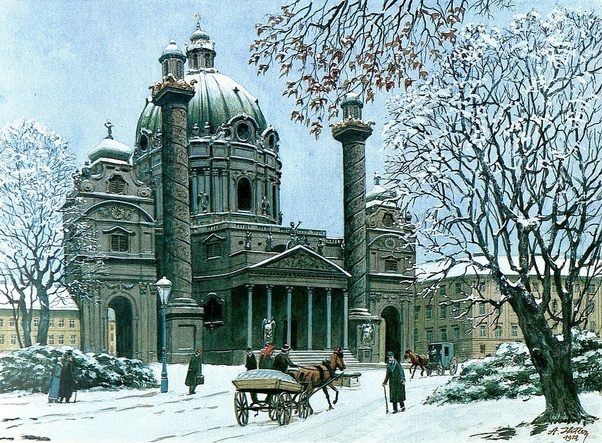
If I had no idea who had painted these, I’d probably think, Hmm, well, this person definitely knows their way around the brush and canvas, although I gravely doubt these pieces have any place in a museum of art. I might even buy the second one to hang in a hallway, since I love the Karlskirche and once had a short-term apartment in the building pictured to the right of it, just across the street from where Brahms lived.
But because they’re done by Hitler, one of the worst things ever to happen to humanity, well, we and other critics are of course prone to use words like flat, soulless, empty… There’s some truth to this point of view, as Hitler was a lifelong aesthetic lowbrow (e.g., quite pedestrian tastes in music and literature) and was far more interested in the craft of artistic composition than in the content, but I think it’s unquestionably the case that we amplify the negatives, understandably, because of who the artist is and what he went on to do.
As we said, Hitler did sell a lot of paintings in his twenties and early thirties. In total he produced a couple thousand canvases, a prodigious output over roughly a decade, though far from all of them went to market.
Some of his best work was done while he was serving on the Western Front in World War I. This was well after he had been twice refused entry into the Akademie der bildenden Künste in Vienna (1907–08). He passed the initial portion of the entrance exam, which was to create artwork on the spot according to assigned parameters, but the examiners found quibbles with his submitted portfolio. One of them said that Hitler struggled overmuch with human figures, which is a valid criticism.
While this is 90% speculation, I think it’s definitely possible that the faculty just didn’t like Hitler apart from the faults they found in his work. He was a country fellow who spoke roughly, dressed oddly, and was extremely socially awkward — not very Viennese, which in the years in question was a highly conservative, obsessively class-conscious place.
The exact timeline is hard to work out, but at some point, Hitler decided that he was more interested in draftsmanship and architecture than in fine art painting; this direction was better aligned with his evidenced talents, to be sure. To enter architecture school in Vienna he would have needed to complete substantial preliminary coursework which he was apparently unwilling to undertake, and possibly unable to do due to his financial predicament.
In any case, it is certainly tempting to consider how the history of the world and the fates of many millions of people might have changed had the Academy taken a chance on the young artist, or had he bitten the bullet and gone on to tackle the prereqs for architecture school, as was suggested to him.


